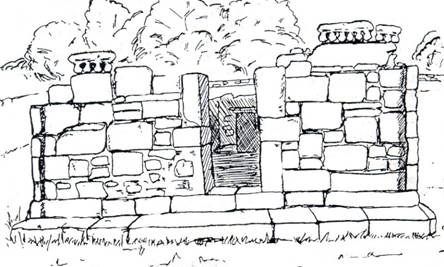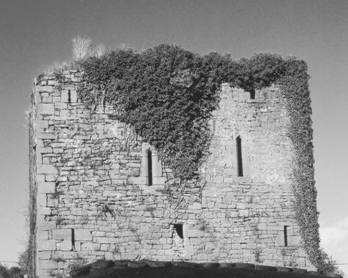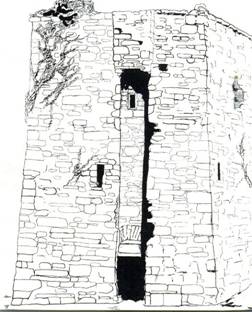O'Gradys of Limerick and Clare
The Celtic imagination produced a genealogy of 109 generations before Gráda who lived about 1000 A.D gave his name to the tribe. The name in Irish is Ó Grádaigh or Ó Gráda meaning the grand-son of the peace loving man, though Hart in his Irish Pedigrees gives a more interesting meaning, i.e. the descendants of the love-making man! Their territory along the western shore of Lough Derg, known as Uí Donghaile, contains the modern parishes of Whitegate, Mountshannon, Scariff and Tuamgraney. Their name is commemorated in placenames such as Lough O’Grady and Knockygrady.
The first O’Grady mentioned in the Annals is Anselis O’Grady, Chief of his name, who along with five other prominent members of his tribe was slain at the Battle of Moinmore near Emly, Co. Tipperary in 1157, according to the Book of Lecan and 1151 according to the Annals of the Four Masters.
In 1185, Cenfaela O’Grady who was both Chief of his name and Abbot of Tuamgraney died. The ancient Annals mention Tuamgraney, its monastery and inmates no fewer than thirty two times between 735 A.D and 1582. In 886 and 949 the Danes came, destroyed the monastery and ‘carried off great plunder.’ Work on the construction of the present church and its Cloictech or Round Tower commenced immediately. Today, St Cronan’s has the unique distinction of being the oldest church in continuous use in Ireland, England, Scotland and Wales. Unfortunately there is no trace of the Round Tower.
The O’Gradys held a hereditary right to positions of influence in the church and local economy. The abbots of Tuamgraney were primarily farmers of monastic lands and were invariably members of the most powerful family in the area. The monastic land which they farmed was called ‘Termony Grady’ in all the old English records. They are also associated with the monastic sites of Clonrush in Whitegate, Moynoe near Scariff and Holy Island on Lough Derg. Holy Island is one of the most famous monastic sites in Ireland. Its many attractions include a Round Tower, the ruins of six churches, a Holy Well, a Bargaining stone and some of the earliest inscription bearing grave slabs in the vernacular. The O’Grady coat of arms and their motto ‘Vulneratus non Victus’, (wounded but not defeated) is depicted on a stone in St Caiman’s church.

The ‘curse of the O’Gradys’ is associated with the Church of the Wounded Men. This tradition which implies that, ‘any woman entering here will be under the curse of barrenness,’ has been proven to be unfounded.
The O’Gradys took the wrong side in a disastrous civil war that raged intermittently for forty years between rival factions of the O’Briens. It finally ended in 1318 at the Battle of Dysert O’Dea. The East Clare tribes of O’Grady, O’Shanahan, O’Ahern, O’Hogan, O’Kennedy, O’Durack, O’Muldoon and O’Gunning were utterly defeated and many were banished.
In the 14th Century the O’Gradys distinguished themselves as an ecclesiastical family. Two related O’Gradys became Archbishops and numerous others held high office. Clerical marriages and succession from father to son was an integral part of the system. Eoin or John O’Grady became Archbishop of Cashel in 1332. His son John O’Grady became Archbishop of Tuam in 1366. His son John O’Grady became Bishop of Elphin in 1405.
The last known elected chief of the O’Gradys was Donough O’Grady c.1500 – 1558 from Fossamore, Tuamgraney. In July 1543, he bowed the knee to Henry V111 and in return received the title, Knight of Tomgraney. He died in a stone house in the parish of St. Nicholas, in Limerick city, known as the Archdeacon’s Court. We do not know where he is buried, which is rather strange, he being such an important man and the supposed father of a Bishop.
Sir Donough had at least three sons Edmund, Donough and John. The Bradys of East Clare claim descent from a fourth son Hugh Grady who supposedly changed his name to Brady. He became the first Protestant Bishop of Meath and his heirs got possession of most of the O’Grady estates in East Clare. Rev Hugh Bradys doubtful pedigree is dealt with fully in a new publication on the history of the O’Gradys.
Only John O Grady c. 1545 – 1631 had issue and his descendants are scattered all over East Clare. It has been wrongfully assumed by many historians and genealogists that this John was the founder of the Killballyowen branch in Co. Limerick. Even the late Dr Edward MacLysaght from Tuamgraney, Ireland’s foremost family historian, went further than others when he stated that the ‘Limerick branch having been Brady for a generation or two reverted to the correct form O’Grady.’
In 1943, Edward MacLysaght was appointed Chief Herald of Ireland and head of the Genealogical Office. In 1944, he established a system of ‘courtesy recognition’ of Irish Chiefs. He adopted primogeniture, or senior male line in descent from the last inaugurated Chief, as the basis for recognizing a modern successor.
It was fitting that he would examine the pedigree of the late Lt. Col. Gerald Vigors De Courcy O’Grady 1912 – 1993 from Kilballyowen. He was designated ‘The O’Grady of Kilballyowen,’ a territorial designation not used in the past and possibly infringing on Article 40 of the Constitution of 1937 which states, ‘the Irish state cannot confer titles.’ Gerald O’Grady vehemently criticized this designation maintaining that he be known simply as ‘The O’Grady.’
It is now generally accepted that Donald O’Grady, Chief of his name who was killed in Battle in County Clare in 1311 had a son Hugh from whom the O’Gradys of Killballyowen descend. Hugh married the only daughter of O’Ciarmhaic, the chief of Áine Cliach, a district surrounding the hill of Cnoc Áine or Knockainey.

Knockainy Castle
Knockainy Church is a veritable O’Grady Museum with its walls covered with plaques to the family. The adjoining graveyard has numerous O’Grady vaults in various stages of decay. There are magnificent vaults to the O’Gradys of Killballyowen, the O’Gradys of Castlegarde, the Guillamore O’Gradys and Edward Stamer O’Gradys. In 1999, the church was closed due to dwindling numbers. It is heartening to hear that initiatives are being put in place to preserve it.
In 1991, East Clare Heritage hosted the first Clan gathering of the O’Gradys in over 400 years. Lt. Col. Gerald Vigors De Courcy O’Grady attended and addressed the gathering. The weekend was a great success and it was decided to form a Clan Association to promote and preserve the history and heritage of the Clan. The untimely death of ‘The O’Grady’ in 1993 was a huge loss and his commitment and encouragement has been sorely missed since.
The present holder of the title, ‘The O’Grady of Kilballyowen,’ is Henry O’Grady who lives in London. His sister Elizabeth O’Grady Lloyd resides on the family estate at Kilballyowen, County Limerick.

The ‘History of the O’Gradys of Clare and Limerick’ is presently with the printers and will be published in February 2007. It has been a difficult undertaking and but for the support and patronage of many O’Gradys worldwide, it would not have been completed.
It is my fervent hope that this History of the O’Gradys of Clare and Limerick, will encourage O’Gradys worldwide to realize that they have an ancient and honorable heritage. Edmund Burke a leading political philosopher and orator of the 18th century said, ‘a man who is not proud of his ancestry will never leave after him anything, for which his posterity may be proud of him.’
Gerard Madden